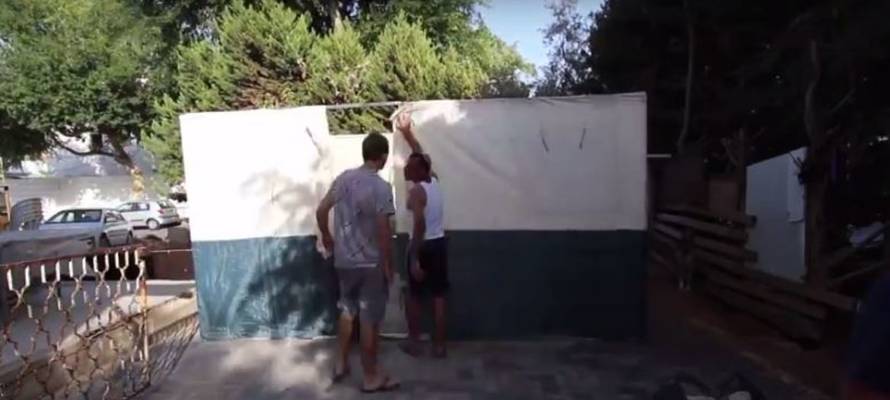The day after the Jewish High Holiday of Yom Kippur, Jewish communities in Israel and around the globe start building in preparation for the Festival of Sukkot.
By: Eitan Press
On Yom Kippur, the Day of Atonement, the people of Israel become like angels, fasting for 24 hours, refraining from eating or drinking. The morning hours of Yom Kippur are spent in synagogue, in solemn but joyous prayer for spiritual purification and forgiveness.
After focusing intensely on the spiritual, Jewish communities in Israel and around the world start getting physical the day after Yom Kippur.
Grabbing their tools and starting preparations for the Festival of Sukkot, Jews construct a temporary outdoor shelter known as a sukkah.
The holiday of Sukkot originates from God’s commandment to the ancient Israelites, as recorded in the Bible:
“For a seven-day period you shall live in booths. Every resident among the Israelites shall live in booths, in order that your [ensuing] generations should know that I had the children of Israel live in booths when I took them out of the land of Egypt.” (Leviticus 23:42–43)
During Sukkot, which is vacation time for many Jewish families, large amounts of food and drink are enjoyed during the many festive meals inside the sukkah.
The Torah refers to Sukkot as the festival of joy, and it was one of the three pilgrimage festivals to Jerusalem along with Passover and Shavuot during the times of the Holy Temple in Jerusalem.
Sukkot is also known as the Feast of Tabernacles, a reference to the dwellings in which Jews live on this festival.
Starting immediately after the end of Yom Kippur prayers, sounds of hammering and woodwork can be heard as the People of Israel begin to build their sukkahs.
According to Rabbi Sholom Brodt, head Yeshivat Simchat Shlomo a Jerusalem house of study , “There is a quote in the Talmud that ‘when a mitzvah comes your way, run to do it at the first opportunity.’”
The temporary nature of the sukkah symbolizes man’s reliance on God for sustenance. The roof of the sukkah is traditionally made out of tree branches and other natural materials, symbolizing the “clouds of glory” that sheltered the ancient Israelites during their wanderings in the desert.
Although a sukkah is traditionally four walls with a natural covering, they are built in many out-of-the-box ways. Jerusalem resident Yosef Sherman builds his sukkah by recycling discarded scrap wood. “Often when people renovate their apartments they throw out wood. Sukkot is also known as the harvest holiday, I very much connect to collecting, building and adding. I deeply enjoy the creative process of gathering and building a sukkah out of recycled materials. It’s never the same sukkah twice.”
In Jerusalem, when Sukkot arrives, these booths fill sidewalks, parking lots, driveways and balconies, transforming the city into a giant landscape of celebration and merriment.

